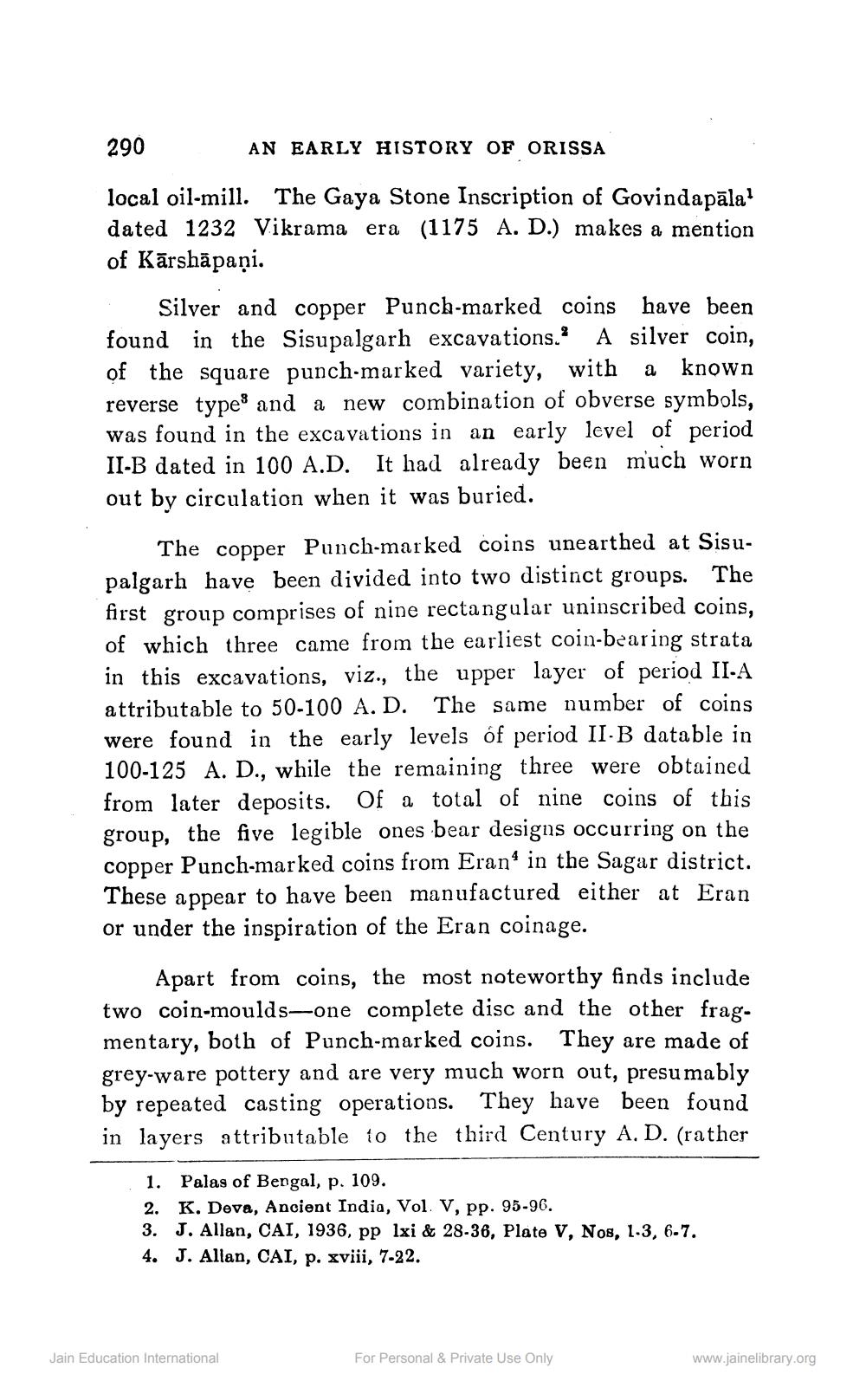________________
290
AN EARLY HISTORY OF ORISSA local oil-mill. The Gaya Stone Inscription of Govindapāla? dated 1232 Vikrama era (1175 A. D.) makes a mention of Kārshāpaņi.
Silver and copper Punch-marked coins have been found in the Sisupalgarh excavations. A silver coin, of the square punch-marked variety, with a known reverse type and a new combination of obverse symbols, was found in the excavations in an early level of period II-B dated in 100 A.D. It had already been much worn out by circulation when it was buried.
The copper Punch-marked coins unearthed at Sisupalgarh have been divided into two distinct groups. The first group comprises of nine rectangular uninscribed coins, of which three came from the earliest coin-bearing strata in this excavations, viz., the upper layer of period II.A attributable to 50-100 A. D. The same number of coins were found in the early levels of period II-B datable in 100-125 A. D., while the remaining three were obtained from later deposits. Of a total of nine coins of this group, the five legible ones bear designs occurring on the copper Punch-marked coins from Erano in the Sagar district. These appear to have been manufactured either at Eran or under the inspiration of the Eran coinage.
Apart from coins, the most noteworthy finds include two coin-moulds-one complete disc and the other frag. mentary, both of Punch-marked coins. They are made of grey-ware pottery and are very much worn out, presumably by repeated casting operations. They have been found in layers attributable to the third Century A. D. (rather
1. Palas of Bengal, p. 109. 2. K. Deva, Ancient India, Vol. V, pp. 95-96. 3. J. Allan, CAI, 1936, pp lxi & 28-36, Plate V, Nos, 1.3, 6-7. 4. J. Allan, CAI, p. xviii, 7-22.
Jain Education International
For Personal & Private Use Only
www.jainelibrary.org




